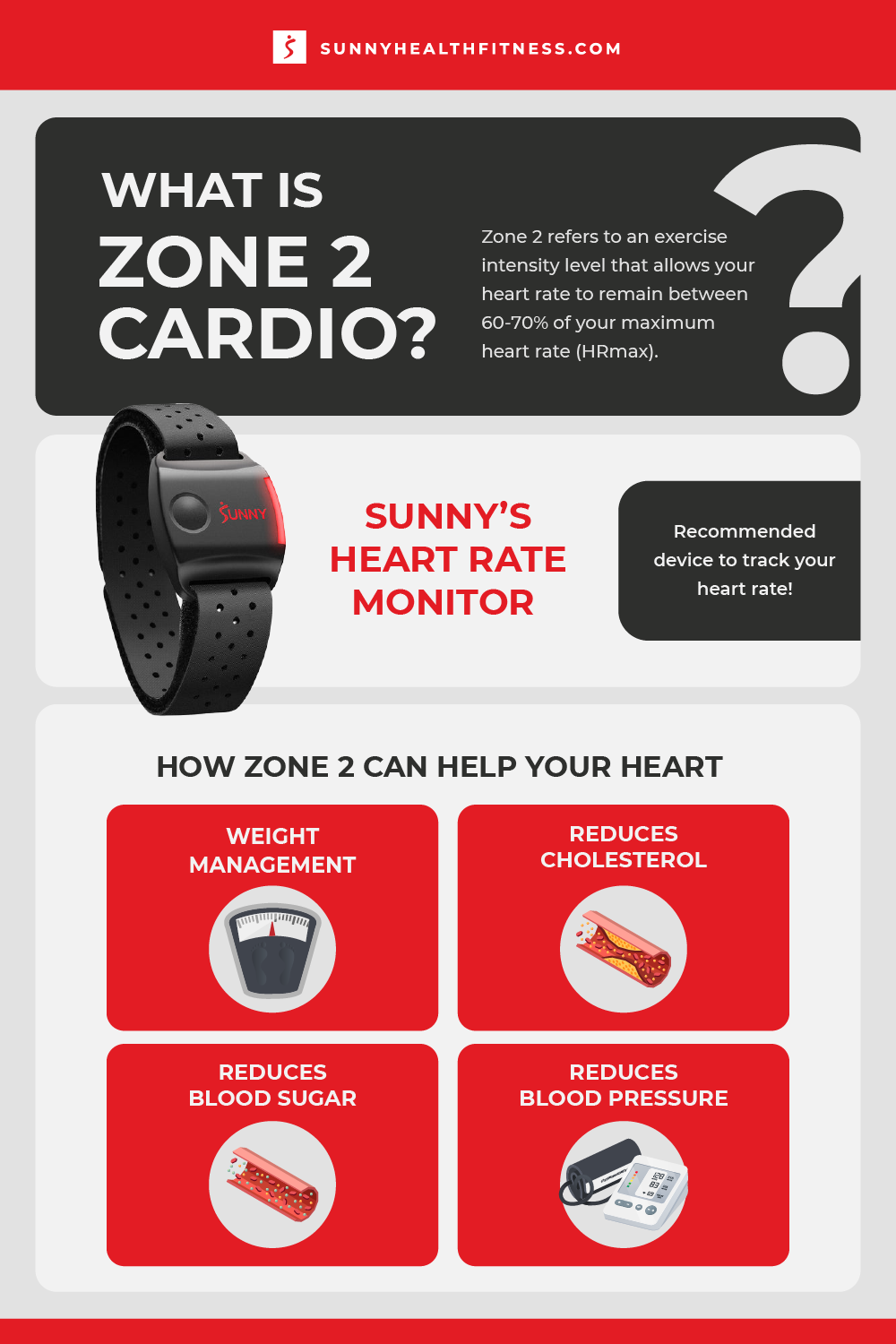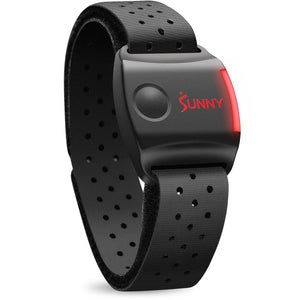Exercise has gotten a bad rap. It always hurts, you’re most likely uncomfortable, and you hate it. But you force yourself to do it because it’s good for you. You have to be gasping for breath and dripping in sweat to make it count, right? Not so fast.
While high-intensity exercise certainly has its merits, if that’s not your cup of tea, no sweat. There’s another way! Moderate intensity exercise, also known as Zone 2, is an essential aspect of any training program. Whether you’re an Olympic athlete or a weekend warrior, science tells us that extended bouts of exercise at about 60-70% of your maximum heart rate provide countless health and fitness benefits.(1)
Improved heart health is at the top of that list. The American Heart Association recommends 150 minutes per week of moderate-intensity exercise, which has been shown to lead to a significant decrease in cardiovascular disease (CVD).(2) Here’s how exercise can help your heart, and why you might consider making it a regular part of your workout routine.
What is Zone 2 Cardio?
Zone 2 refers to an exercise intensity level that allows your heart rate to remain between 60-70% of your maximum heart rate (HRmax). Calculate your HRmax by subtracting your age from 220. From there, find 60% of your HRmax and 70% of your HRmax. Monitor your heart rate during exercise, and ensure that you remain within this range to stay in Zone 2. For example:
220 – 33 years = 187 beats per minute (bpm) is my HRmax.
187 X .60 = 112 bpm is 60% of my HRmax
187 X .70 = 130 bpm is 70% of my HRmax
During my Zone 2 cardio sessions, my goal is to stay between 112 bpm and 130 bpm.
If you don’t have a device that can measure your heart rate (might I suggest Sunny’s Heart Rate Monitor 😉), you can use alternative methods to determine your exercise intensity level. First, use the Rating of Perceived Exertion (RPE) scale. Moderate intensity should rate at about a 4-6 on a scale of 1 through 10. Second, use the “talk test.” Aptly named, you pass this test if you can talk with your workout buddy without gasping for air. If you are unable to hold a conversation, it's time to back off on the intensity.
Examples of Zone 2 include power walking, jogging, or cycling, just to name a few. The options to choose from are vast! Oftentimes low impact and joint friendly, this type of exercise is accessible for all body types. Sunny also offers some great Zone 2 bodyweight workouts, where no equipment is required. Check them out here:
How Zone 2 Can Help Your Heart
Your heart is a muscle, similar to your biceps or your glutes. Over time, your heart will grow stronger in response to repeated exercise bouts that encourage elevated heart rates. It doesn’t need to be anything intense, just aim to be within that moderate intensity zone. Your heart will become more efficient at pumping blood and oxygen out to the rest of your body, a necessity to thrive.
When considering CVD and how to prevent it, Zone 2 can be helpful in a myriad of ways.
Weight Management
While exercising in Zone 2, your body primarily metabolizes fat as a source of energy. In other words, you will burn a higher percentage of fat while doing Zone 2. Modest weight loss (about 5-10% of body weight) has been clinically proven to reduce CVD risk factors such as elevated blood sugar, blood pressure, and cholesterol.(3) If your doctor has recommended that you start a weight management plan for health reasons, Zone 2 is a great option.
Reduces Cholesterol
Regular exercise is correlated with 30-40% lower triglyceride levels, with a boost in HDL cholesterol (“good” cholesterol). Individuals with lower triglyceride levels and higher HDL levels are associated with a reduced likelihood of developing cardiovascular disease (CVD).(4)
Reduces Blood Sugar
Zone 2 improves your body’s ability to use blood glucose independent of insulin to create fuel, effectively reducing overall blood sugar. This is important as elevated blood sugar is a common risk factor for CVD.(3)
Reduces Blood Pressure
Exercise affects blood pressure both short-term and long-term. While exercising, your body releases catecholamines (your body’s signaling molecules) to dilate your blood vessels. This allows blood to flow more freely so oxygen and nutrients are more readily available to your muscles and organs. This vasodilation can cause a significant drop in blood pressure that may remain in effect up to 24 hours after your exercise session.
Long-term, as your body adapts to exercise, your average resting heart will decrease. Thanks to your stronger heart, it doesn’t have to work quite as hard to meet your body’s needs. Therefore, the force exerted on your arteries decreases as your blood circulates through your body. Lower blood pressure reduces the likelihood of heart attack or stroke.(5)
Extending Beyond Heart Health
The benefits of Zone 2 exercise don’t stop at heart health. Enhance other areas of your health and wellness by adding moderate-intensity exercise to your routine!
Boosts Mental Health
Exercise releases a multitude of feel-good hormones, famously known as endorphins. Additionally, exercise works to reduce chronically high levels of cortisol while simultaneously enhancing dopamine, another feel-good chemical.(1)
Beyond that, exercise is a great way to reduce stress and clear your mind!
Extends Longevity
Aside from the fact that Zone 2 improves heart health, and therefore longevity, exercising in this manner promotes a strong, mobile body for years to come. Also known as "healthspan," Zone 2 cardio extends the years of your life during which you can function optimally.
Prevents Injury and Overtraining
Due to the low-impact nature of Zone 2, you minimize the stress your body experiences during each exercise session. This translates to a decreased likelihood of experiencing injury and burnout due to overtraining.(1)
Tips on Incorporating Zone 2 Into Your Week
Incorporating additional exercise into your weekly routine might appear daunting, but it doesn't have to be as challenging as you might imagine. Try out these tips to get started!
Start Small
The AHA recommends 150 minutes per week of Zone II cardio, but if that feels overwhelming, take a step back. You don’t have to start there – work on incorporating 10 minutes of Zone 2 per day, and build from there as you get stronger.
Make it Simple
The beauty of Zone 2 is that it doesn’t need to be anything complicated or fancy. Something as straightforward as a quick lunchtime walk will do the trick! In fact, the more simple you can make this practice the better. Find a time in your schedule that works best for you and move your body in a way that feels good.
Make it Fun!
Grab a co-worker for your lunchtime walk, meet a friend to jog in the park, or go for a scenic bike ride and allow your mind to wander. Adding an element of whimsy and fun to your exercise session will make it that much more enjoyable.
Zoning in On Health
Exercise doesn't have to be a constant push to your limits to yield results, and Zone 2 workouts prove just that. Enhance heart health, extend longevity, boost mental well-being, and exercise in a way that feels good in your body. Engaging in moderate-intensity exercise provides a welcome opportunity to take a step back both mentally and physically, while still prioritizing what your body was meant to do – move. Try it out and watch your health transform!


1. Sarah Zimmer, P., & Russin, H. (2024, February 4). What’s zone 2 heart rate training? metabolic benefits and how to know you’re doing it: Signos. RSS. https://www.signos.com/blog/zone-2-heart-rate. Accessed 8 February 2024.
2. American Heart Association recommendations for physical activity in adults and kids. www.heart.org. (2024b, January 19). https://www.heart.org/en/healthy-living/fitness/fitness-basics/aha-recs-for-physical-activity-in-adults. Accessed 8 February 2024.
3. Wing, R. R., Lang, W., Wadden, T. A., Safford, M., Knowler, W. C., Bertoni, A. G., Hill, J. O., Brancati, F. L., Peters, A., & Wagenknecht, L. (2011). Benefits of modest weight loss in improving cardiovascular risk factors in overweight and obese individuals with type 2 diabetes. Diabetes Care, 34(7), 1481–1486. https://doi.org/10.2337/dc10-2415. Accessed 8 February 2024.
4. WebMD. (n.d.). Exercises to control your cholesterol. WebMD. https://www.webmd.com/cholesterol-management/features/exercises-to-control-your-cholesterol. Accessed 8 February 2024.
5. Hegde, S. M., & Solomon, S. D. (2015). Influence of physical activity on hypertension and cardiac structure and function. Current Hypertension Reports, 17(10). https://doi.org/10.1007/s11906-015-0588-3. Accessed 8 February 2024.


























Add Your Name & Email
Please enter your name and email to continue.We won’t display your email publicly.
2 comments
Loved this article. Been doing the 10 minute recumbent elliptical zone 2 workout. Are there any others for this machine?
Loved this article. Been doing the 10 minute recumbent elliptical zone 2 workout. Are there any others for this machine?